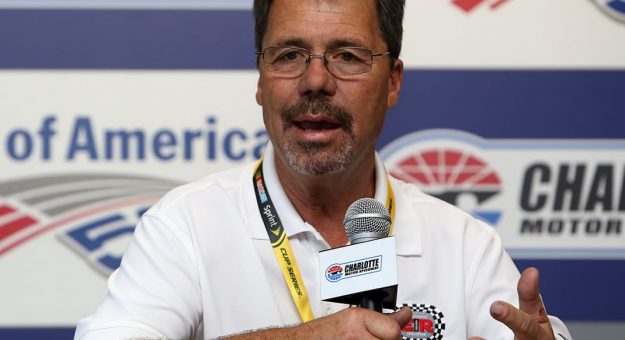Irvan felt comfortable with his right foot on the floorboard during the 500. Although he never took the lead until lap 125, Irvan never lost touch of the front-runners.
What made Daytona so difficult to win wasn’t just the pressure of performing and the threat of mechanical failure. It was the challenge of avoiding trouble, which bit many of the 42 competitors during a crash-filled race slowed by nine caution periods.
The most memorable impact, however, occurred five minutes after the green flag. Earnhardt ran into a seagull while leading the Daytona 500.
One year after a piece of bell housing — the part of a car’s transmission that covers the clutch and the flywheel — cut his tire on the last lap, Earnhardt’s bid for redemption took a beating when a stray seagull flew across the backstretch, swooped toward the track and into Earnhardt’s left-front fender at 195 mph.
The seagull didn’t knock Earnhardt out of the race, but there were concerns of his car overheating. Maybe it affected the handling.
Whatever the case, Earnhardt’s black No. 3 Chevrolet Lumina led 46 laps, but it couldn’t hug the bottom groove like Irvan’s yellow No. 4 car during the closing laps. While running second and tucked in behind Earnhardt, Irvan made his move with six laps to go. He dove under Earnhardt, pulled away by two car lengths and before Earnhardt could counter, Allison pounced.
With Irvan in charge out front, Allison tried to pass Earnhardt on the high side, but the maneuver took the air off Earnhardt’s spoiler, sent him around and into Allison to trigger another pileup with three laps to go.
Irvan was leading. The race was set to end under caution. It appeared to millions watching on television that Irvan was poised to win The Great American Race in a stunning upset.
Irvan was less certain.
“We were running out of gas at the very end,” Irvan said. “I had to go down to the apron and keep the car down there to make sure we had enough gas to get across the line.”
Sterling Marlin knew Irvan was close to running out of fuel. If Irvan’s car slowed, Marlin could capitalize.
“I didn’t know if Ernie was going to run out or not,” Marlin said. “I was hoping he would.”
He didn’t. Irvan’s car had enough fuel to take the checkered flag. Less than a year after telling his crew chief he sucked at restrictor-plate racing, Irvan was a Daytona 500 winner.
Marlin had to settle for second and a three-year wait for his first Daytona 500 victory, while Earnhardt finished fifth and had to wait seven more years to win the 500.
“To this day, winning that race means everything to me,” Irvan recalled. “It’s something no one can take away. Whenever someone introduces me, it’s always ‘Ernie Irvan, Daytona 500 winner.’ You don’t think about things like that in the moment. It was like when I was chosen one of NASCAR’s 50 greatest drivers in 1998. At the time, you’re thinking, ‘Oh, that’s neat,’ but when you get older, you realize what it really means.
“I got to do all kinds of stuff afterward. I got to go to the White House. I thought somebody was pulling my leg when they told me, but I really got to put on a suit and go to the White House, which was incredible,” Irvan added. “Then after you do television and radio and all that, you forget about the race. You load the car back up and you try to win again. That’s the mindset everybody had.”
Irvan’s next victory came six months later on a road course at Watkins Glen (N.Y.) Int’l. Before he left Morgan-McClure for Robert Yates Racing at the end of the 1993 season, Irvan scored four more wins — three on restrictor-plate tracks and another on a road course.
“I told Tony I sucked at the road courses and the superspeedways, and then we went out and won on both of them,” Irvan said. “I’d kind of thought, ‘OK, whatever you say,’ when he said that about being in the right car, but he was right.”
Irvan won eight races in Yates’ Ford-powered cars from 1993-’97, overcoming a near-fatal crash at Michigan Int’l Speedway in 1994 to return to the cockpit and compete until he retired in 1999.
The thought of winning at Daytona still brings a smile to Irvan’s face. During a low-stakes poker game at his shop in Ocala, Irvan’s longtime friend, sprint car racing legend Danny Lasoski, checked out Irvan’s trophy display.
“Ernie, all this looks great, but have you ever won the Knoxville Nationals?” Lasoski asked.
Irvan’s answer is quick and to the point.
“No, but have you ever won the Daytona 500?”
